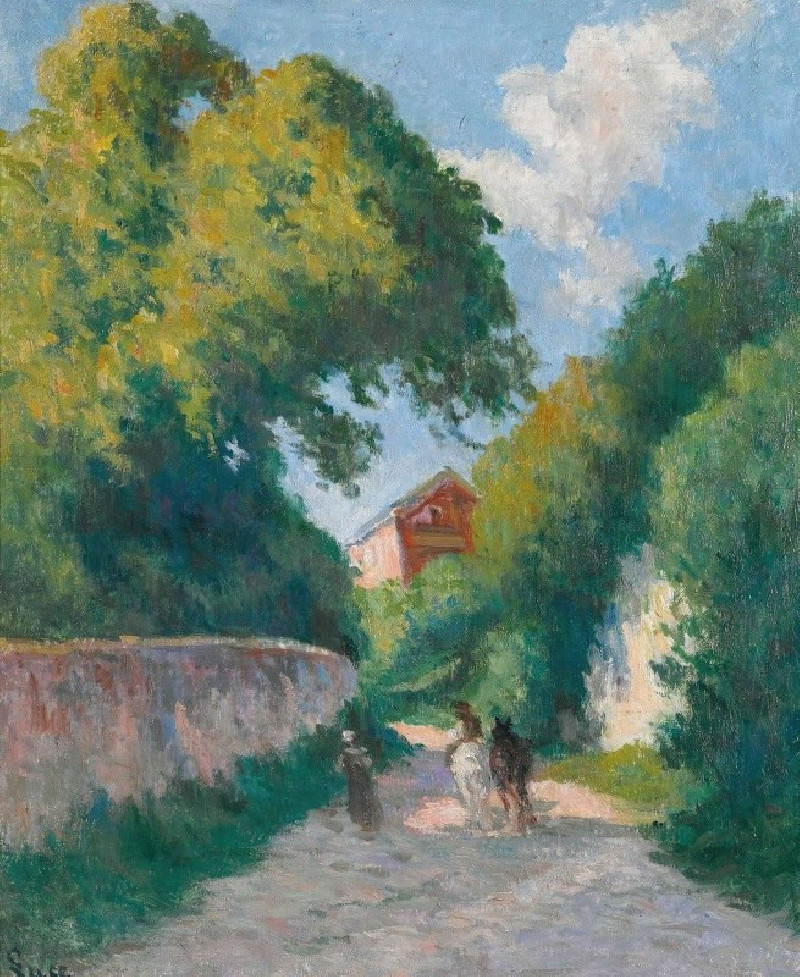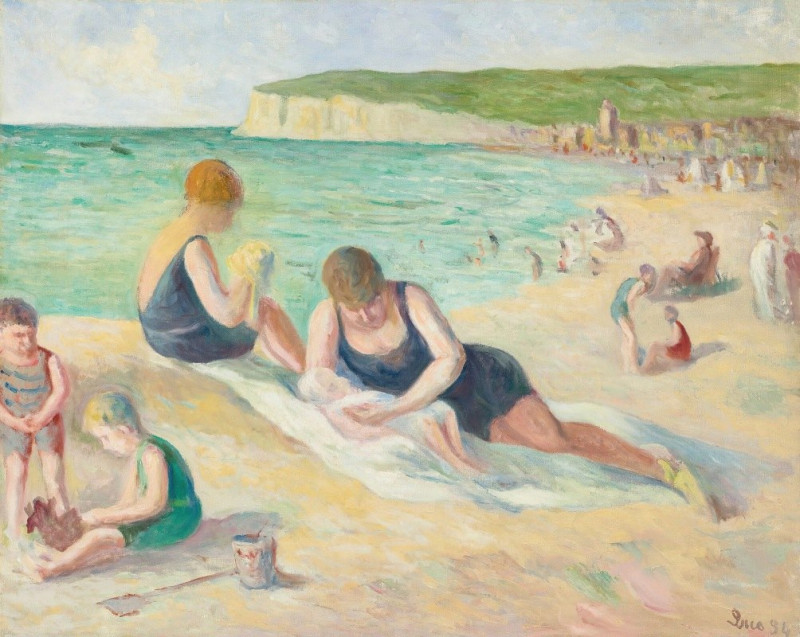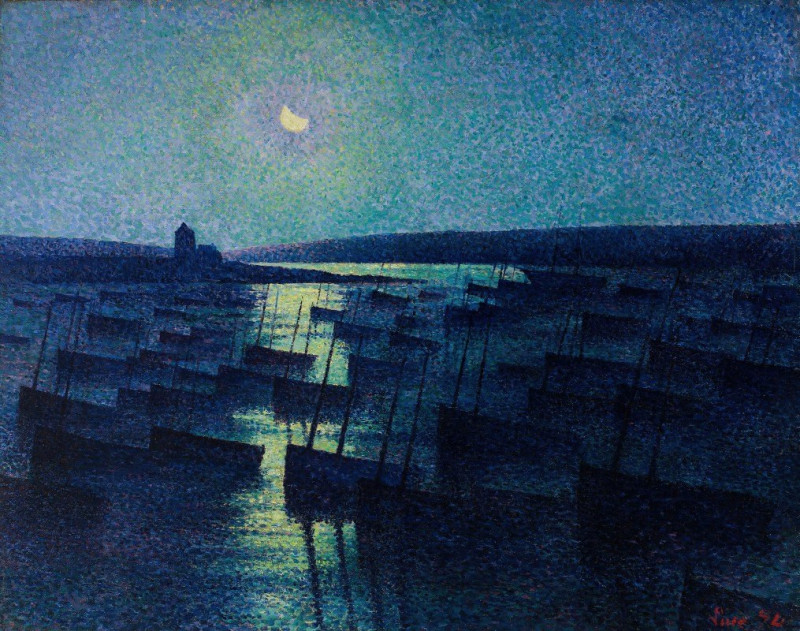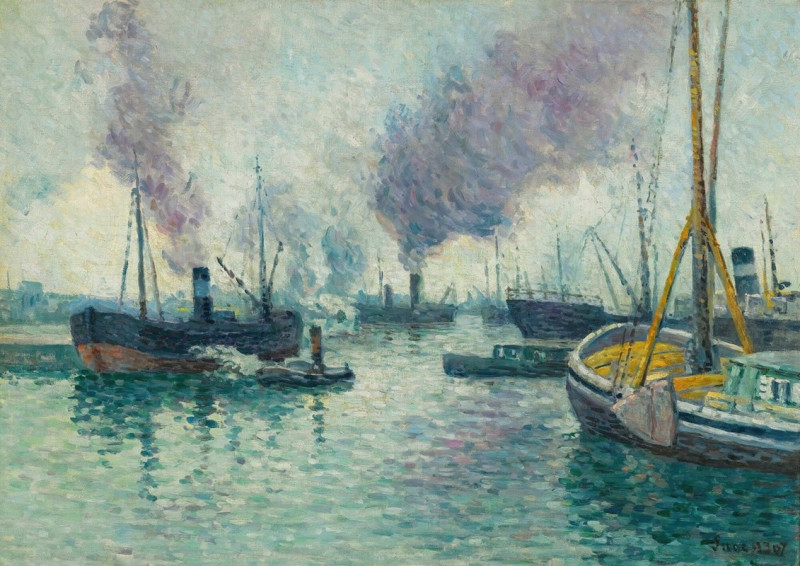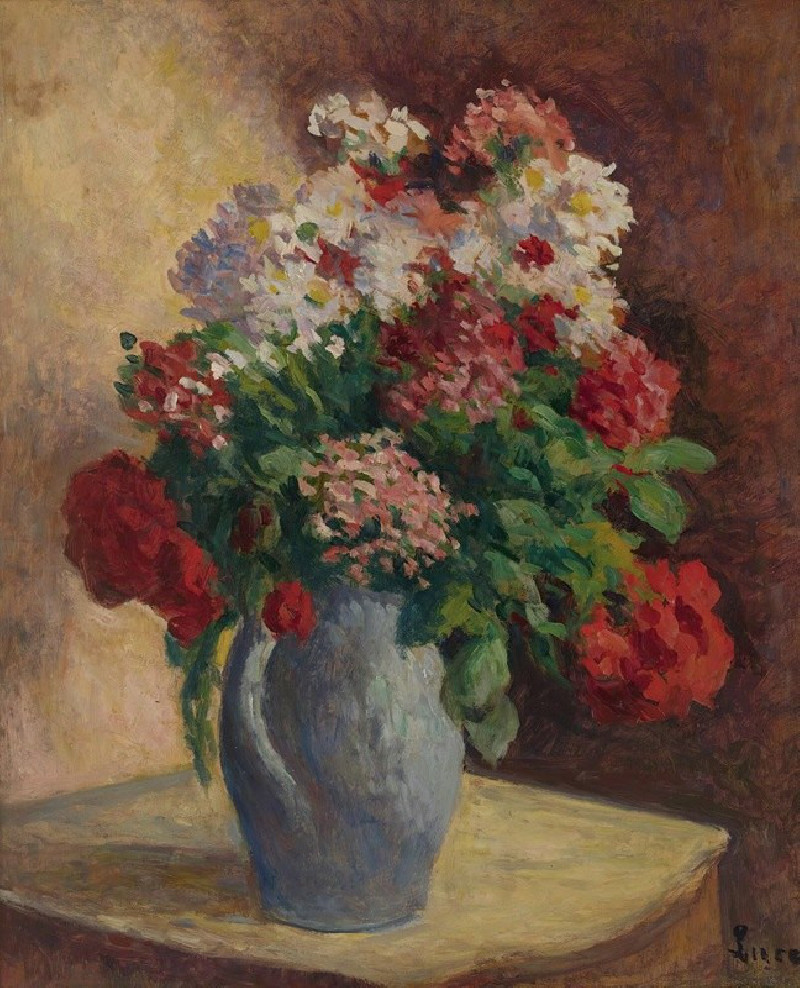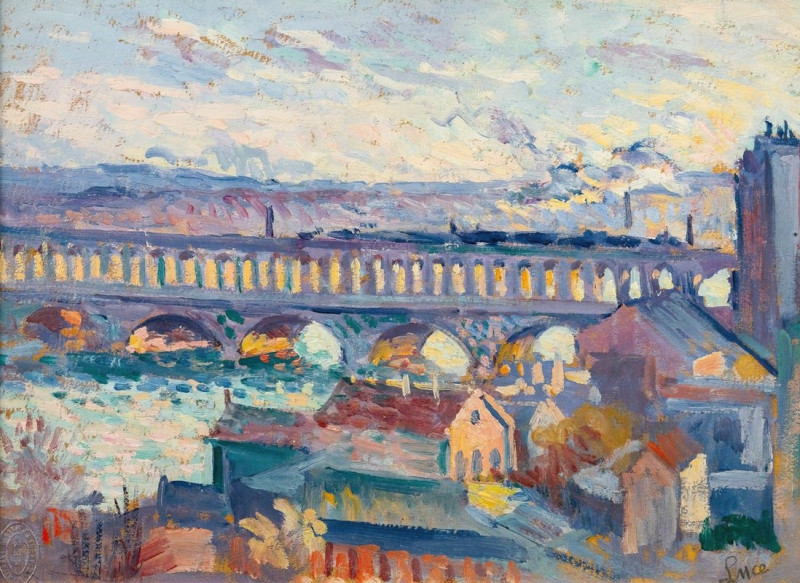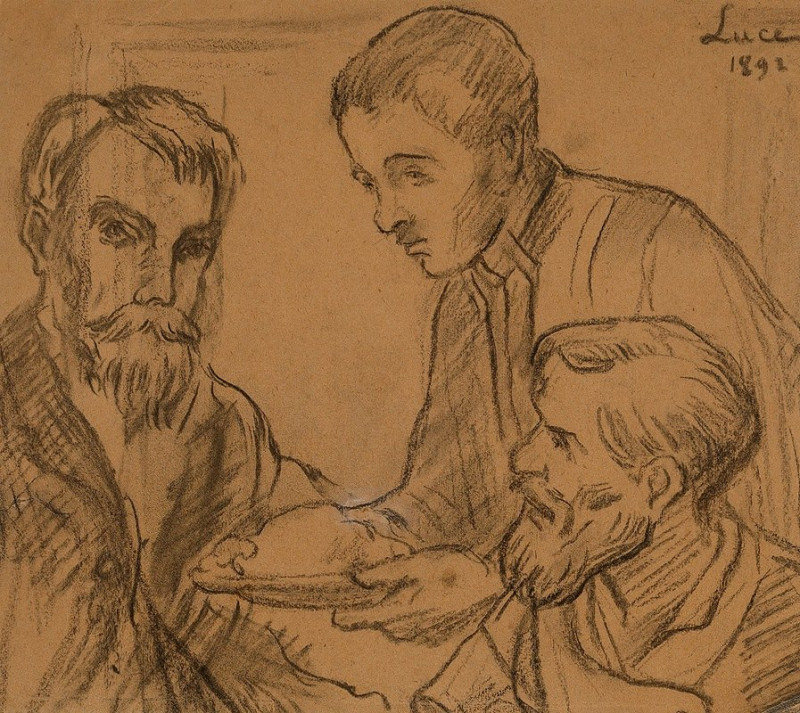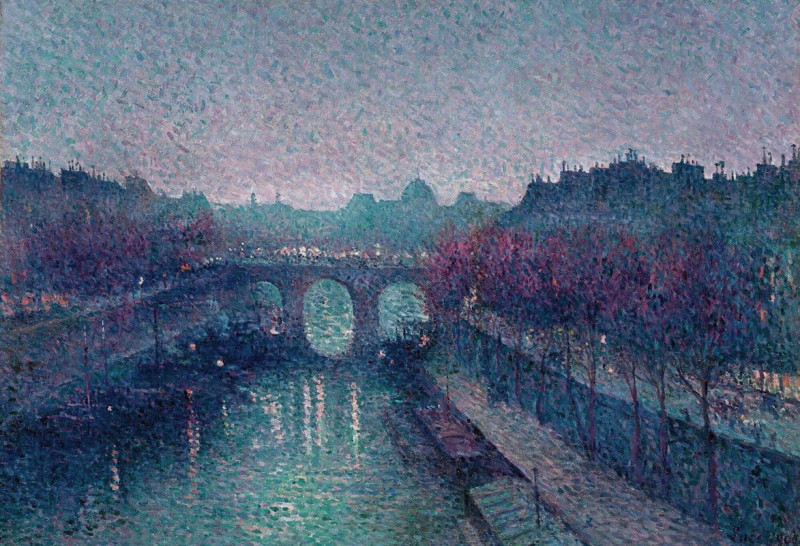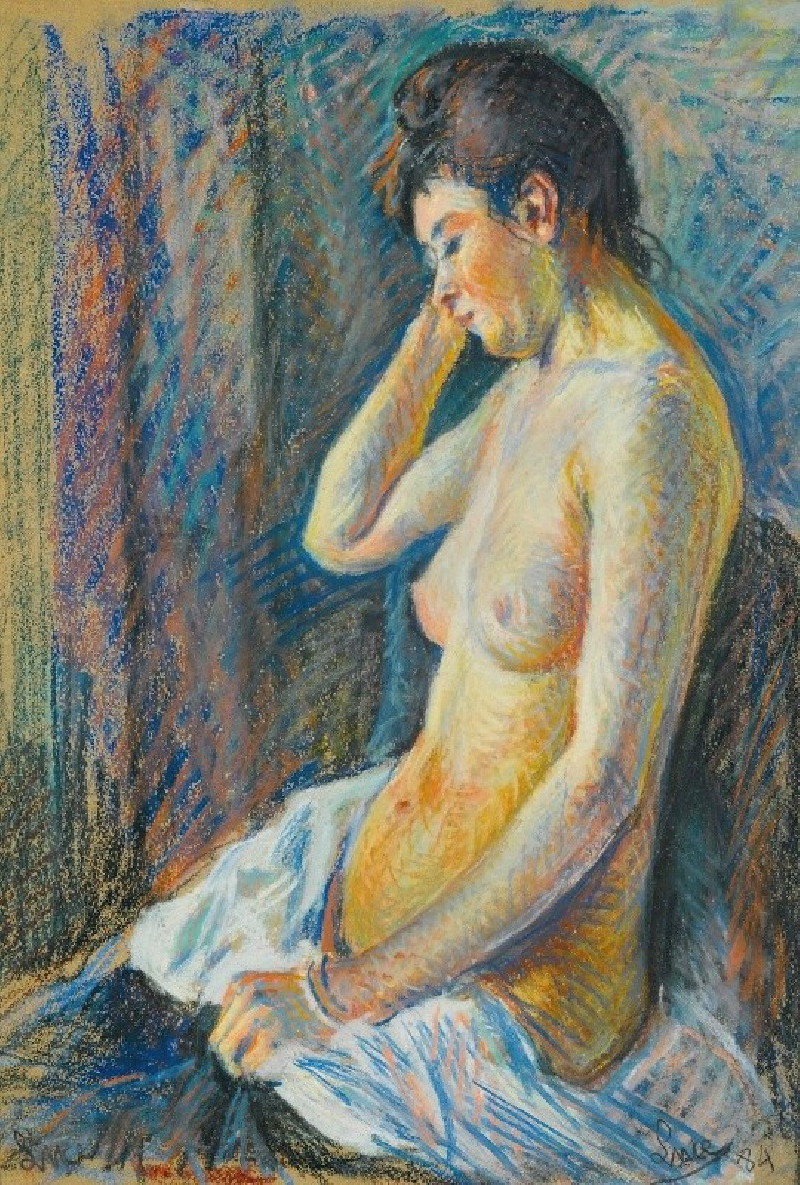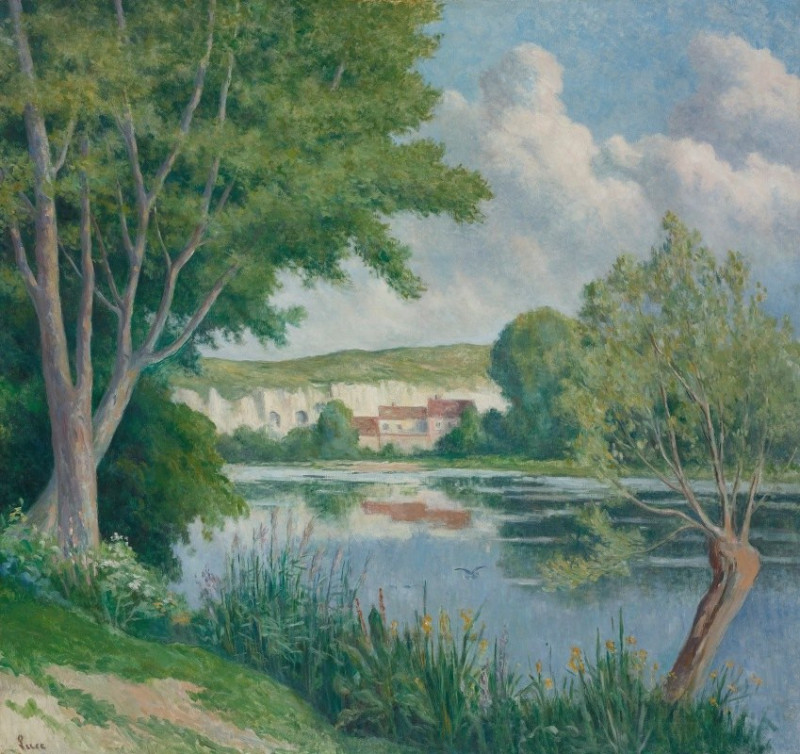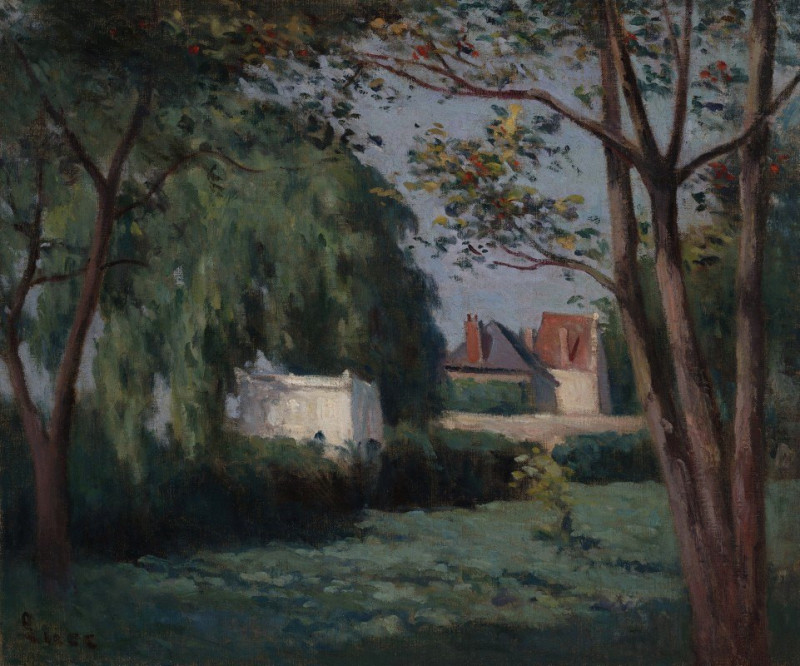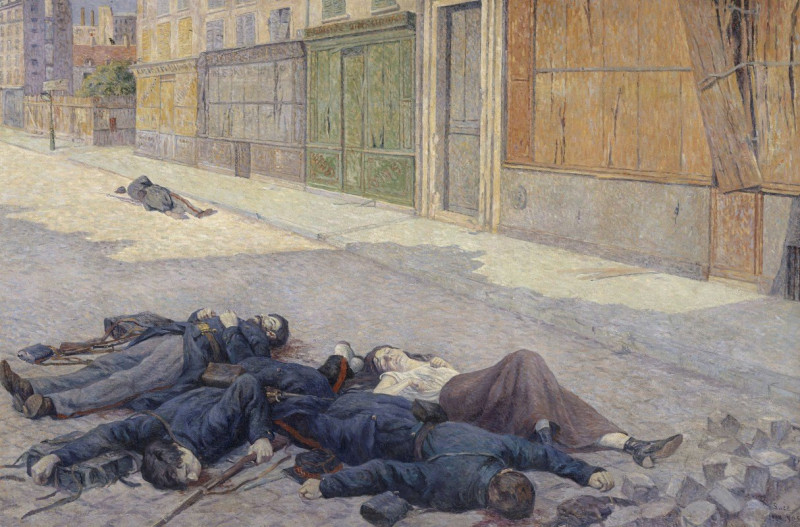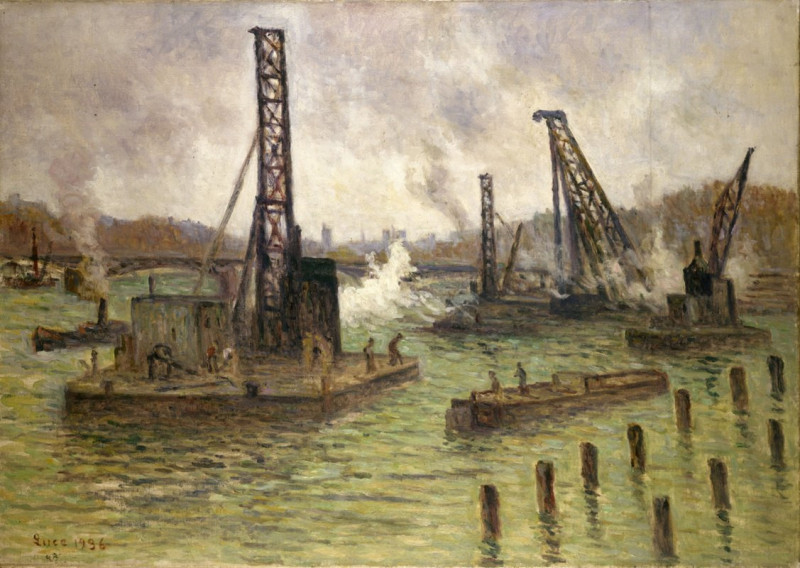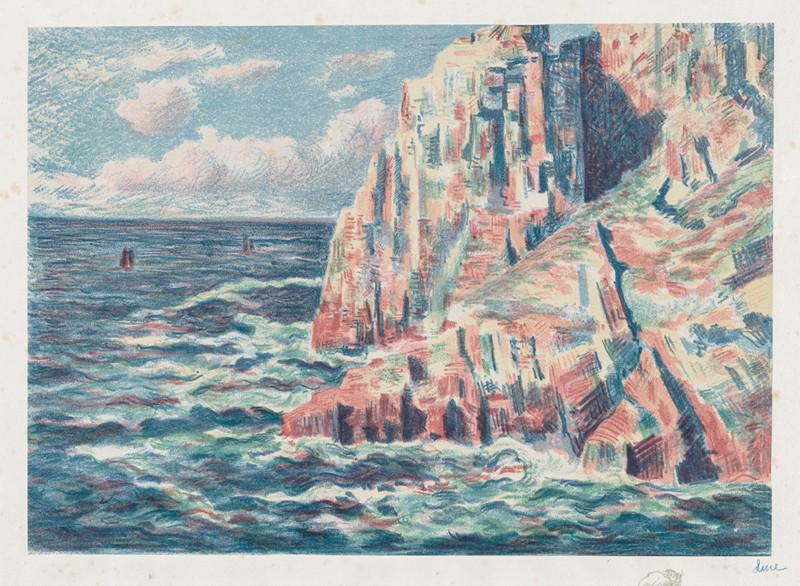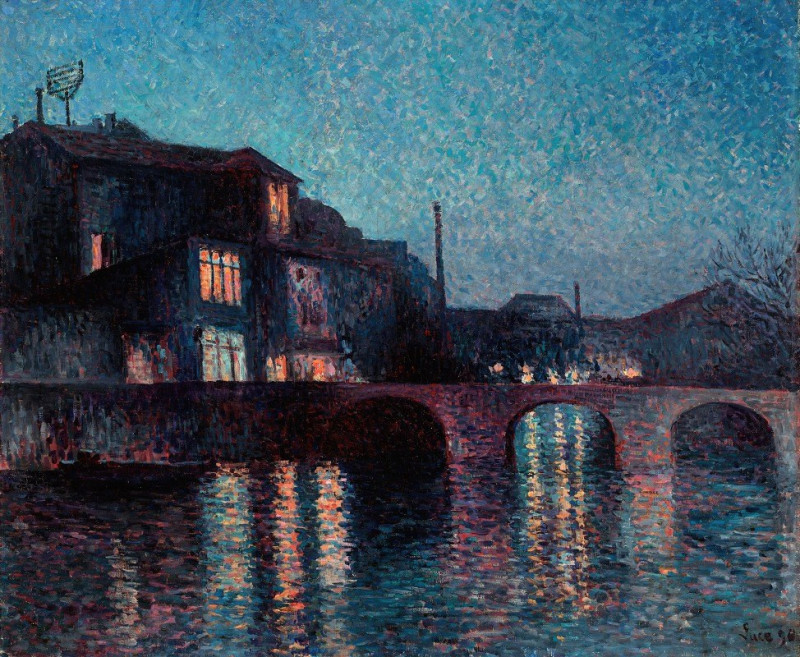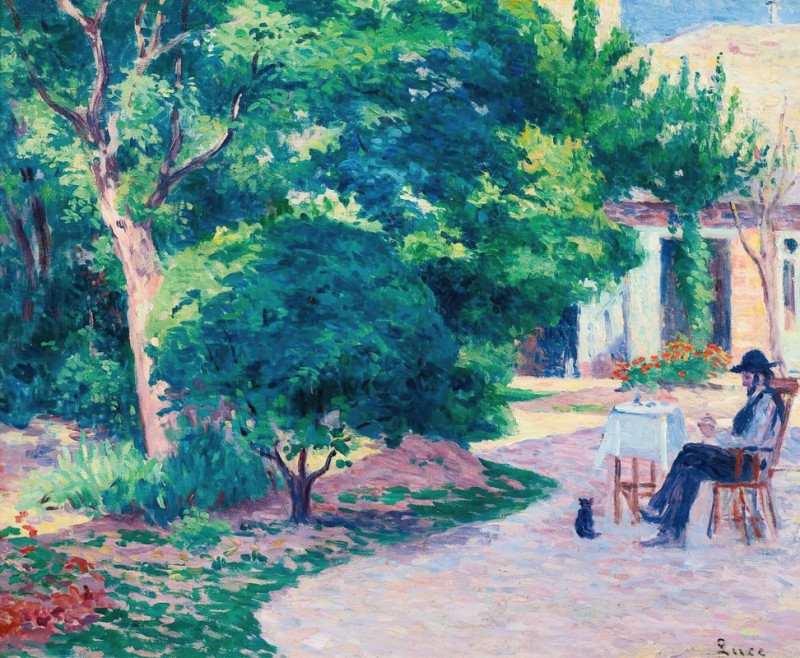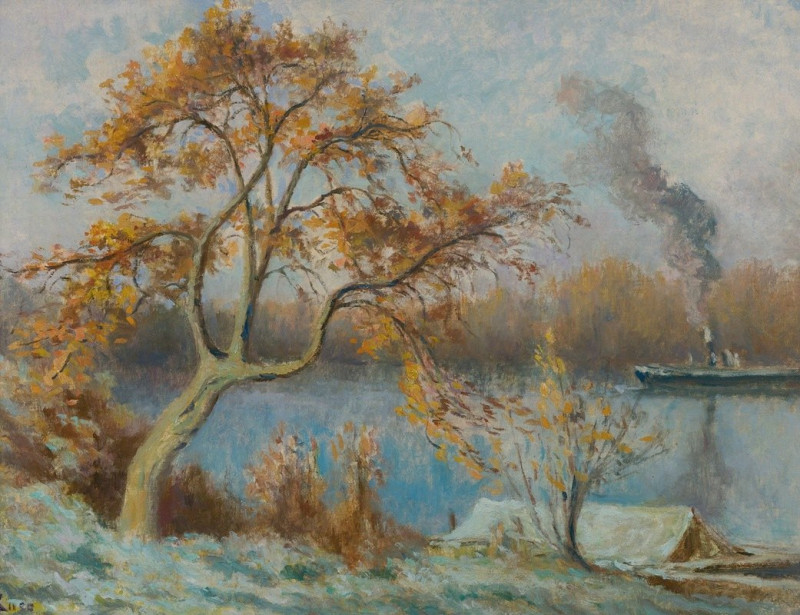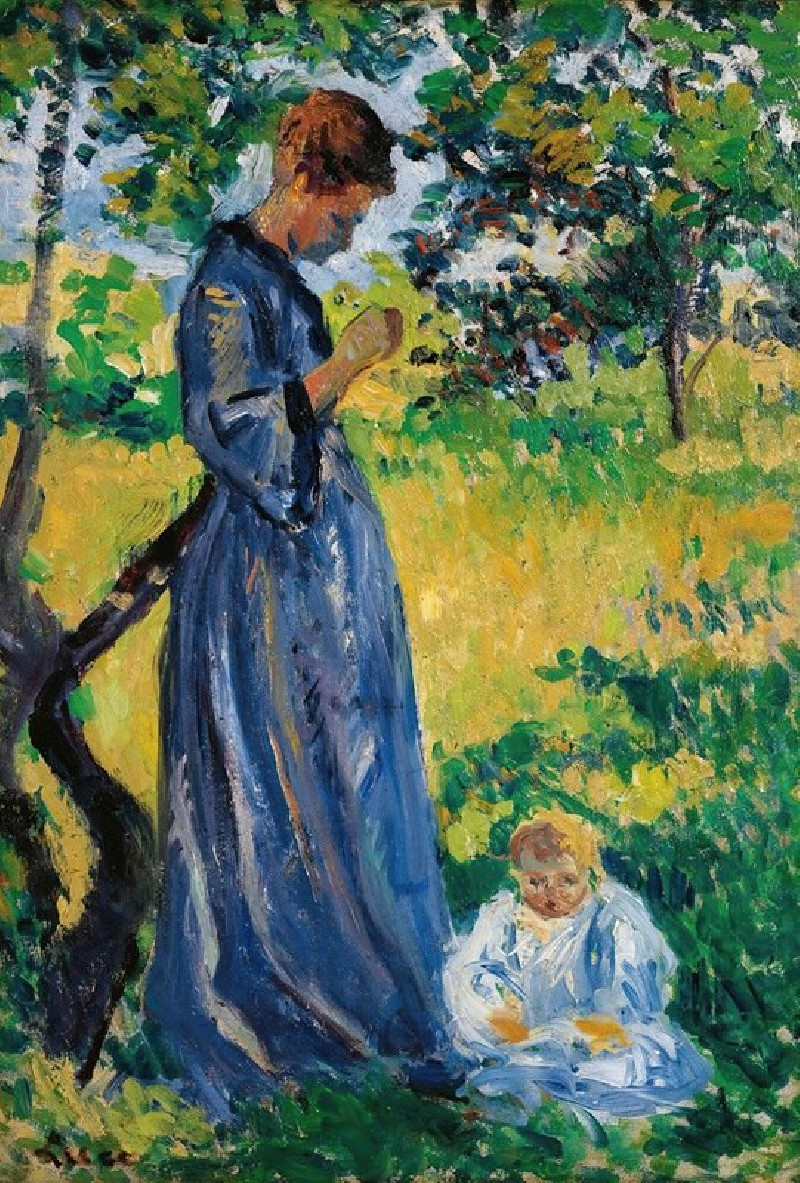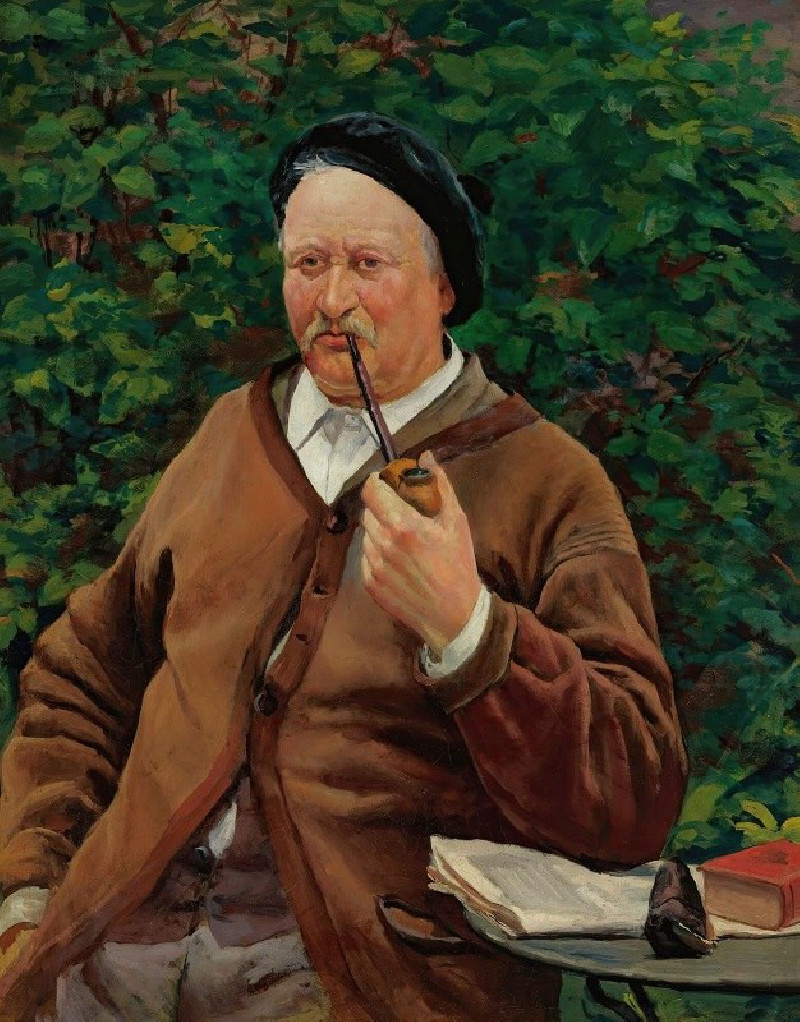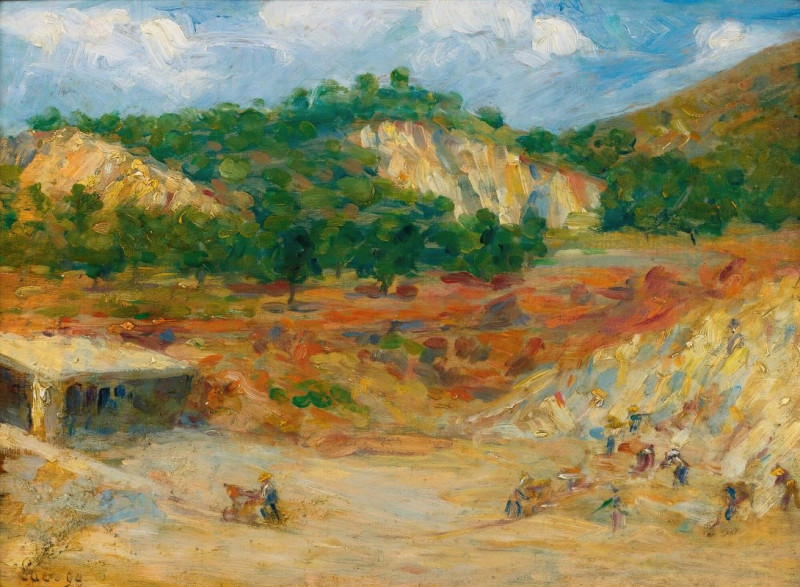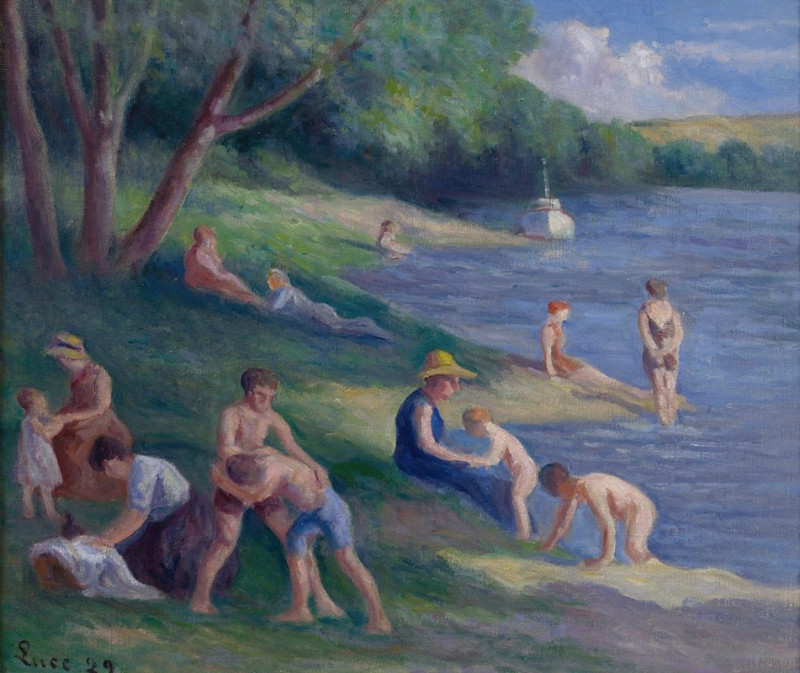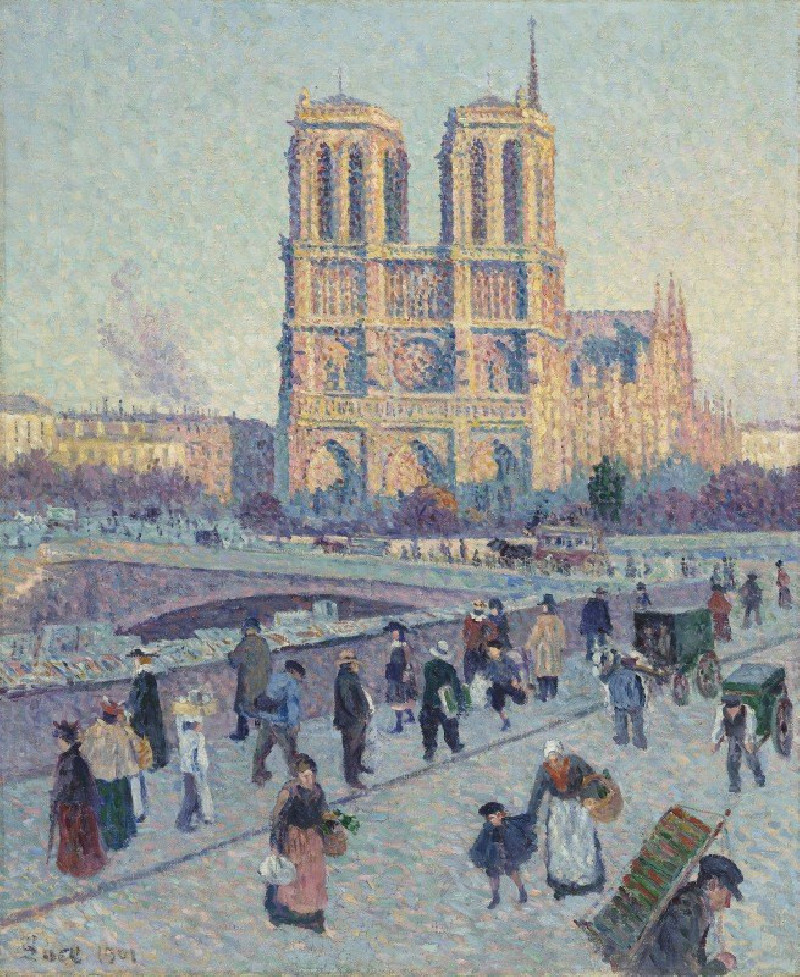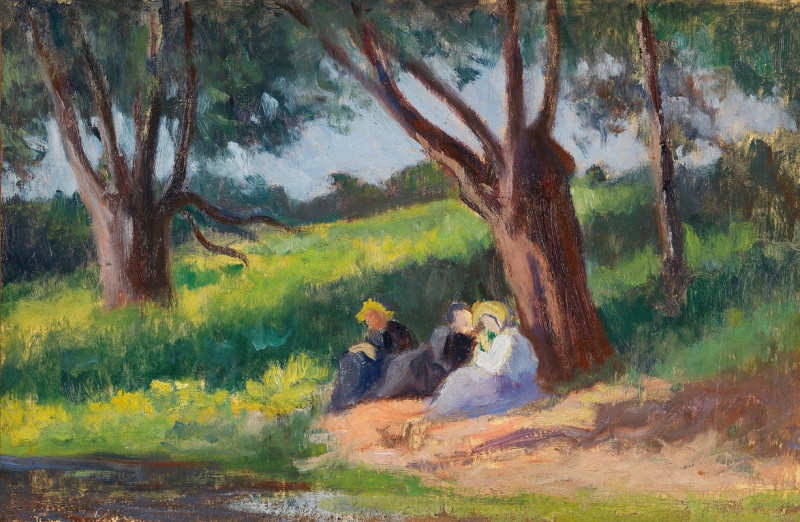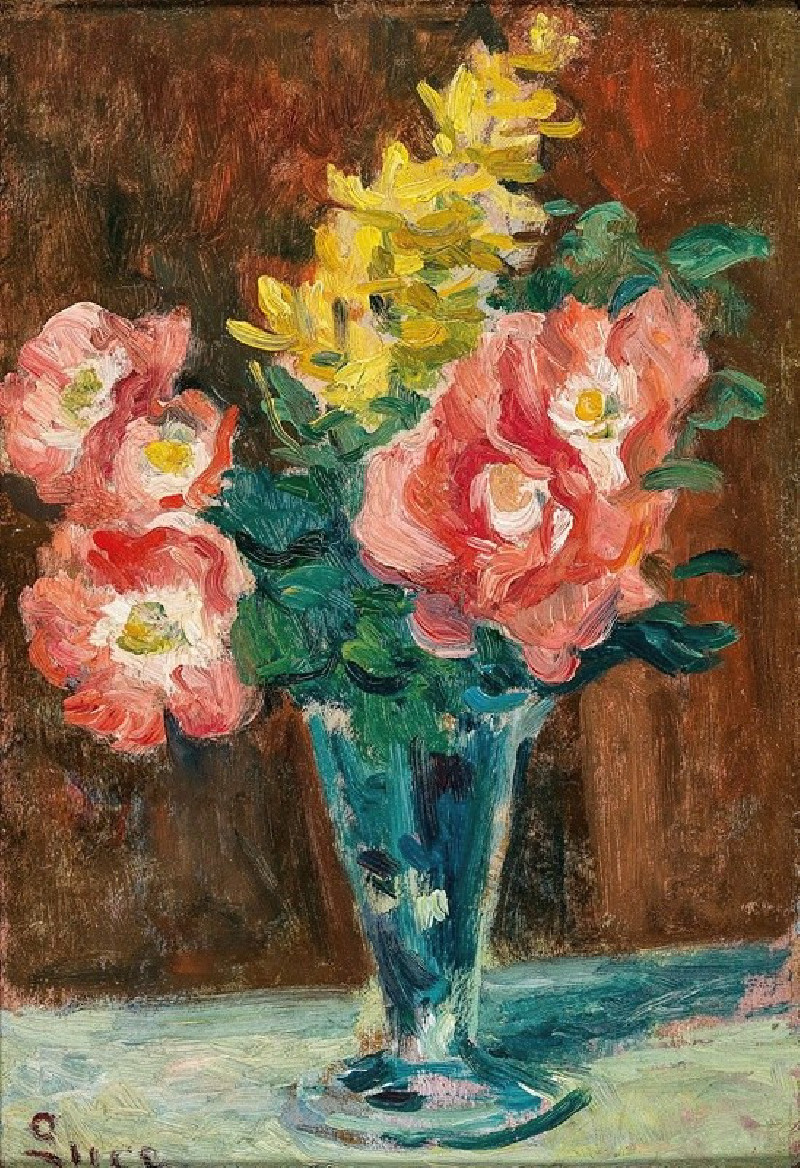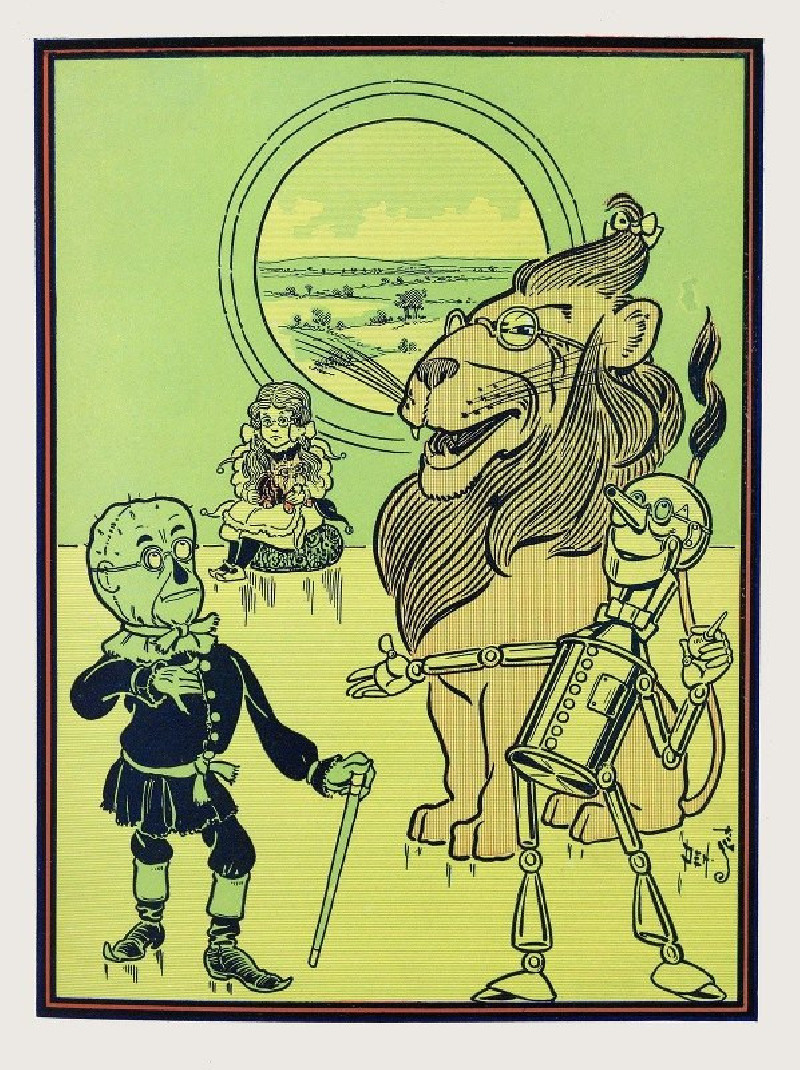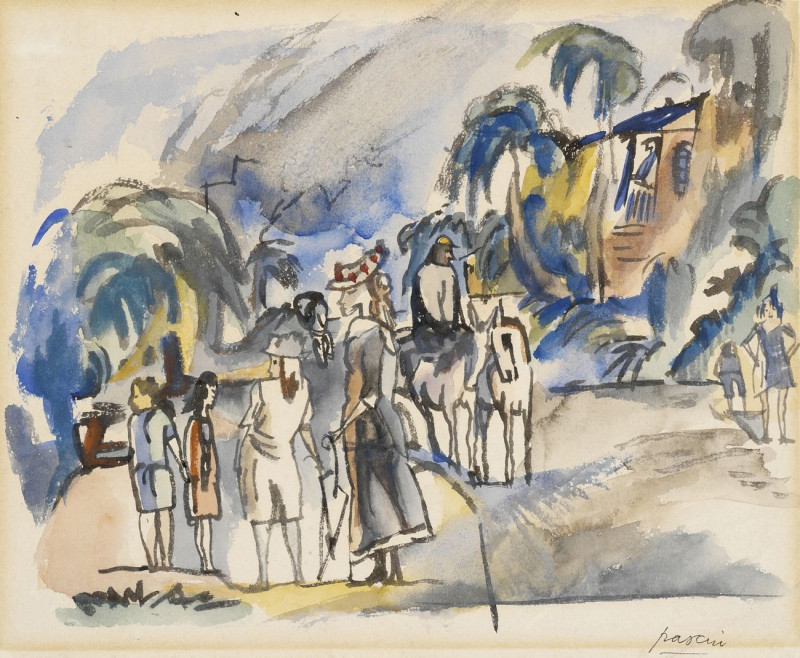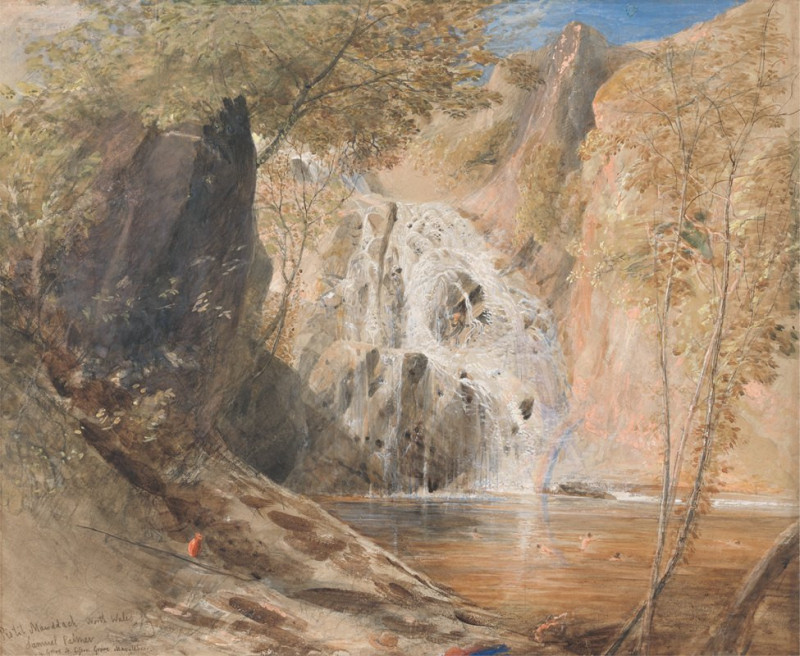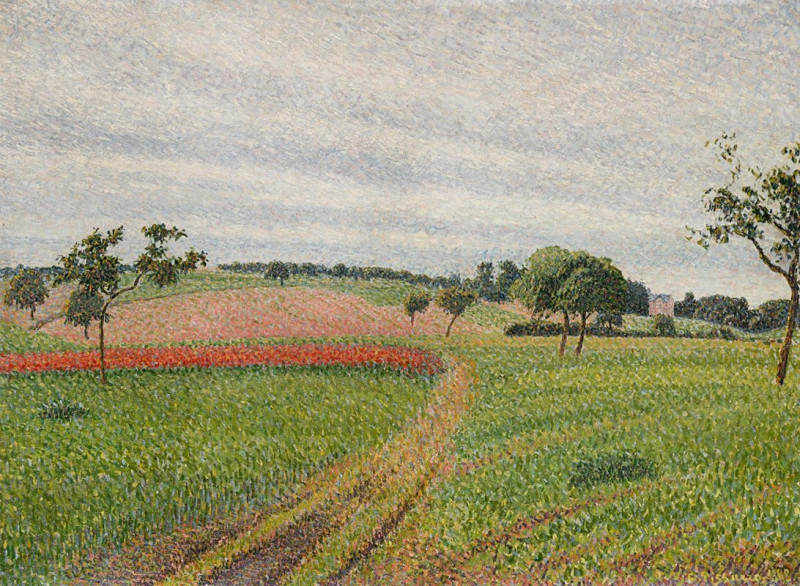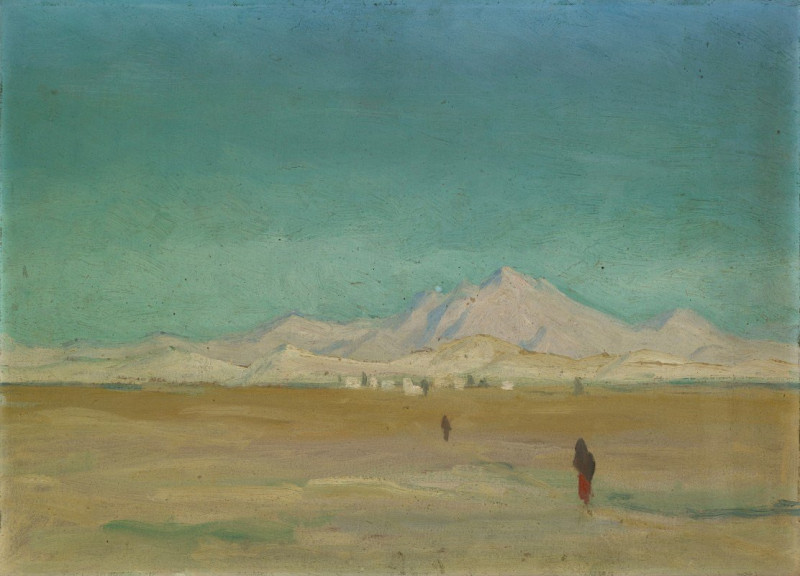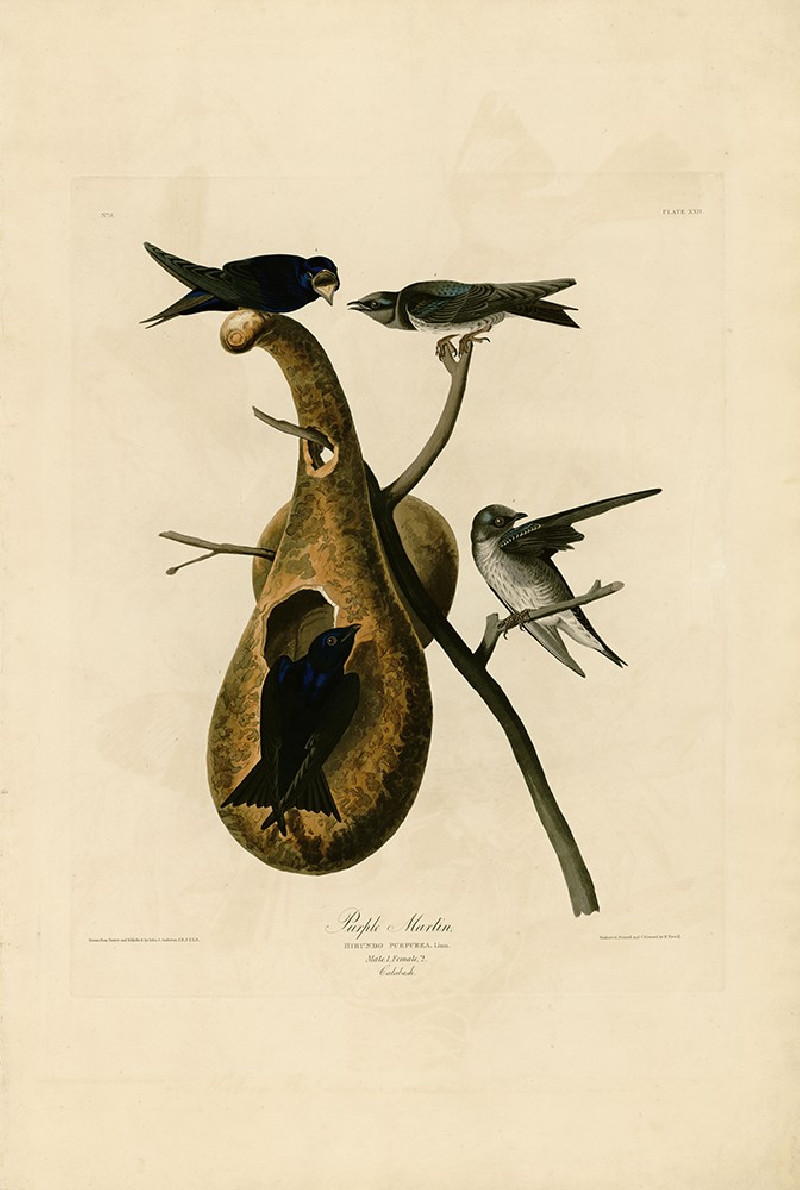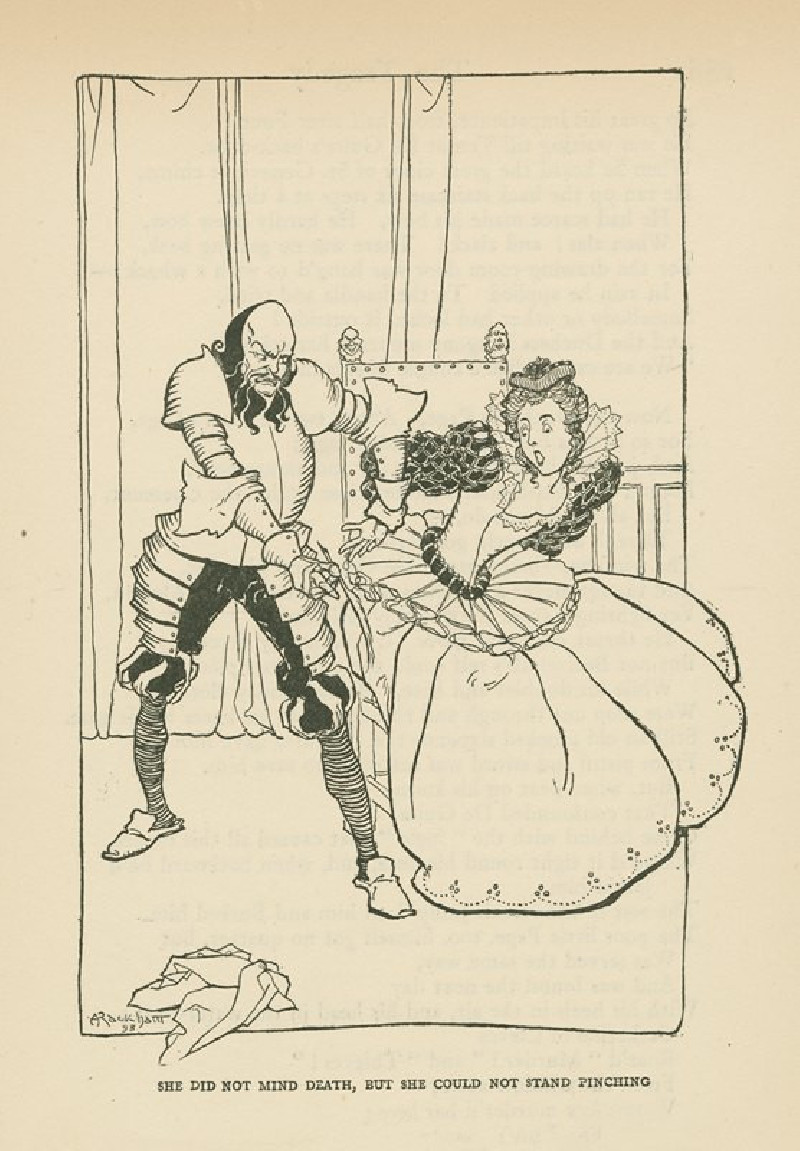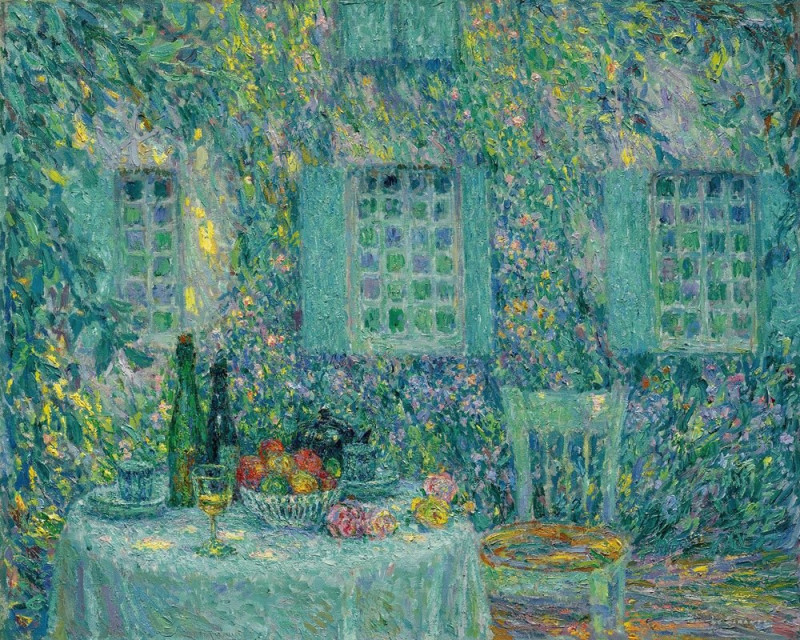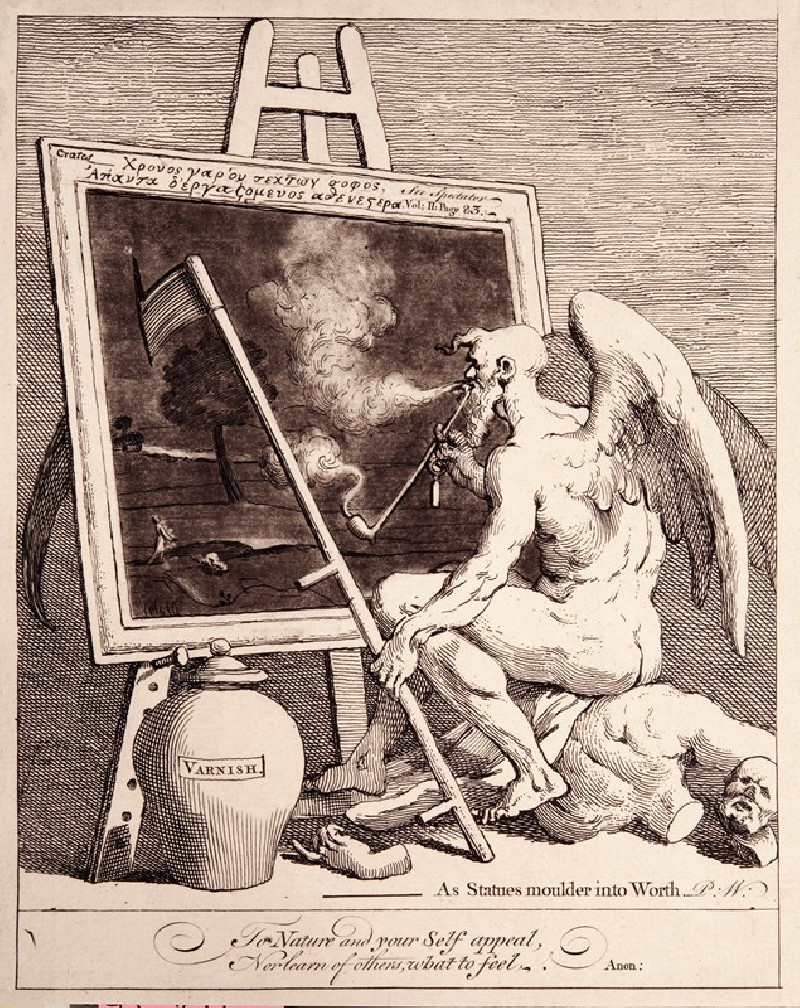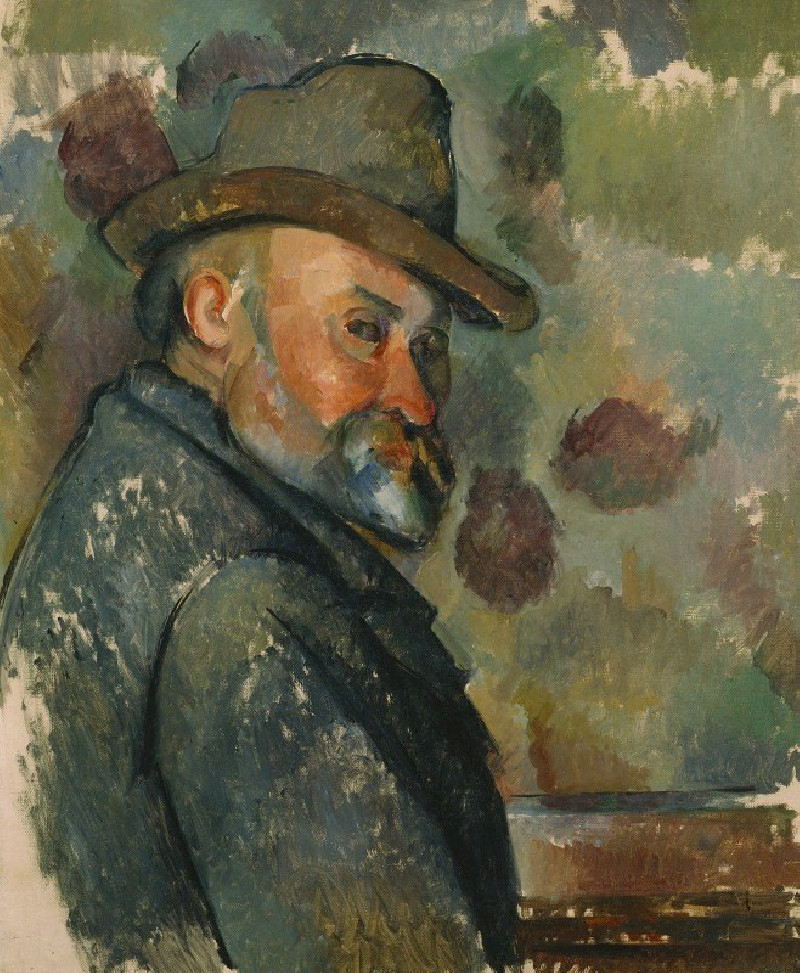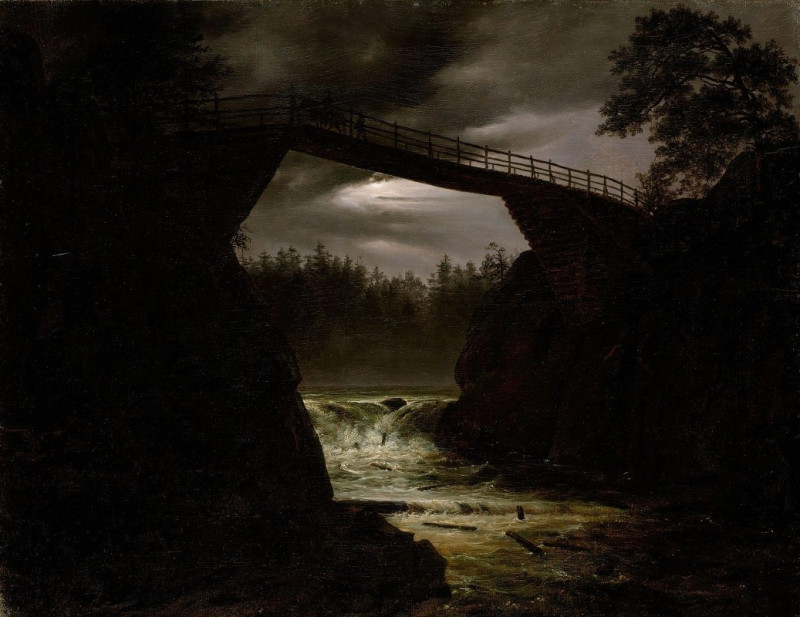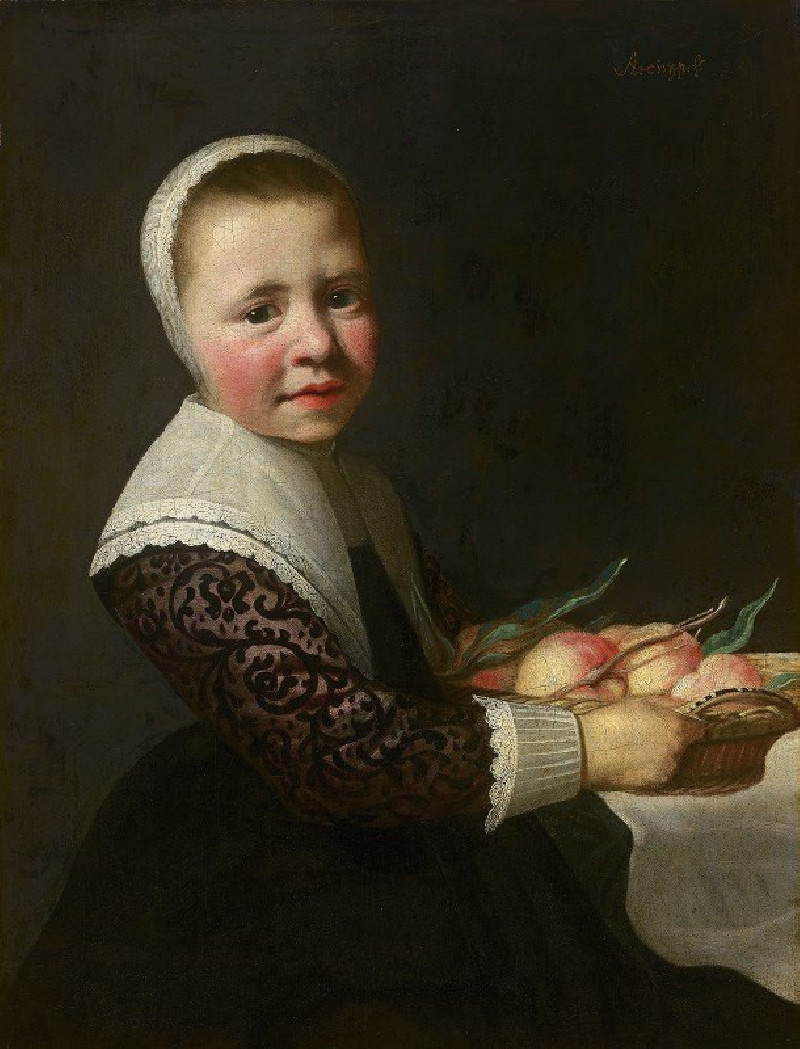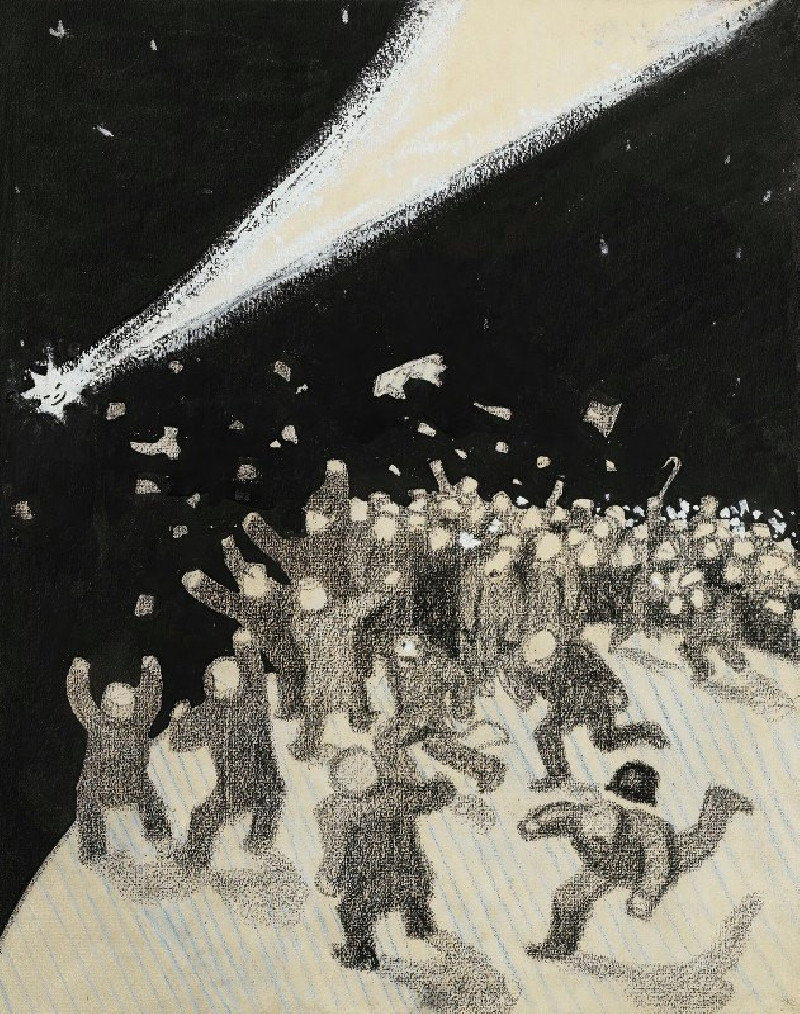Environs De Rolleboise, Le Retour À La Ferme (circa 1920)
Technique: Giclée quality print
Recommended by our customers
More about this artwork
Welcome to our exploration of Maximilien Luce's "Environs De Rolleboise, Le Retour À La Ferme," a notable work exemplifying the vibrant and dynamic brushstrokes characteristic of post-impressionism. Painted around 1920, this serene landscape scene captures a timeless pastoral mood steeped in natural beauty.As your eyes wander through the painting, you are transported to the tranquil outskirts of Rolleboise, a village known for its picturesque surroundings. In this painting, Luce constructs a peaceful rural setting using a harmonious palette of greens, blues, and earthy tones. The scene is centered around a small road that leads through lush, verdant foliage under a brightly lit sky suggestive of a clear day.The focal point of the composition is a figure-drawn cart, returning to the farm, which gives the painting its title. Accompanied by figures who seem deeply integrated into their rural environment, this cart adds a narrative element to the work, highlighting the rustic lifestyle and the connection between humans and nature.Dominating the background is a large, inviting tree that stretches across the canvas, its leaves rendered with energetic strokes of green and yellow, symbolizing the vibrancy of life. Adjacent to this, the sky is depicted with softer, fluid dabs of white and blue, creating a serene and open atmosphere.To the right, a hint of architectural structure peeks through—the red-roofed building, potentially part of the farm, adds a touch of warmth and anchors the composition.Maximilien Luce’s "Environs De Rolleboise, Le Retour À La Ferme" is not just a representation of a location but an invitation to appreciate the calm and continuity of pastoral life, offering viewers a chance to escape into the mesmerizing charm of the French countryside.
Delivery
Returns
Maximilien Luce was a prolific French Neo-impressionist artist, known for his paintings, illustrations, engravings, and graphic art, and also for his anarchist activism. Starting as an engraver, he then concentrated on painting, first as an Impressionist, then as a Pointillist, and finally returning to Impressionism.

